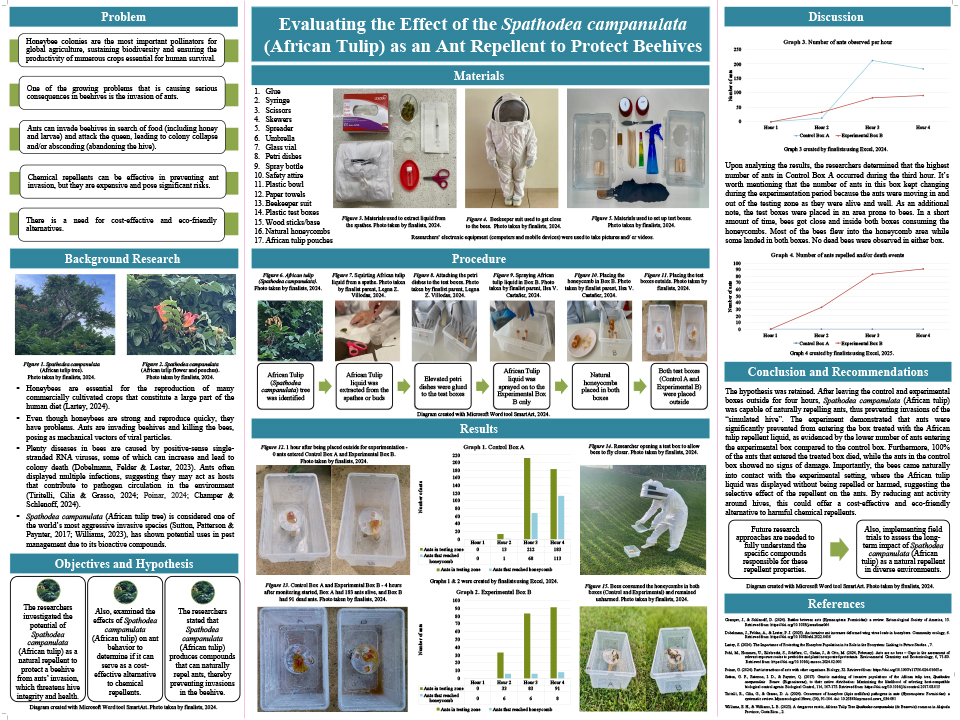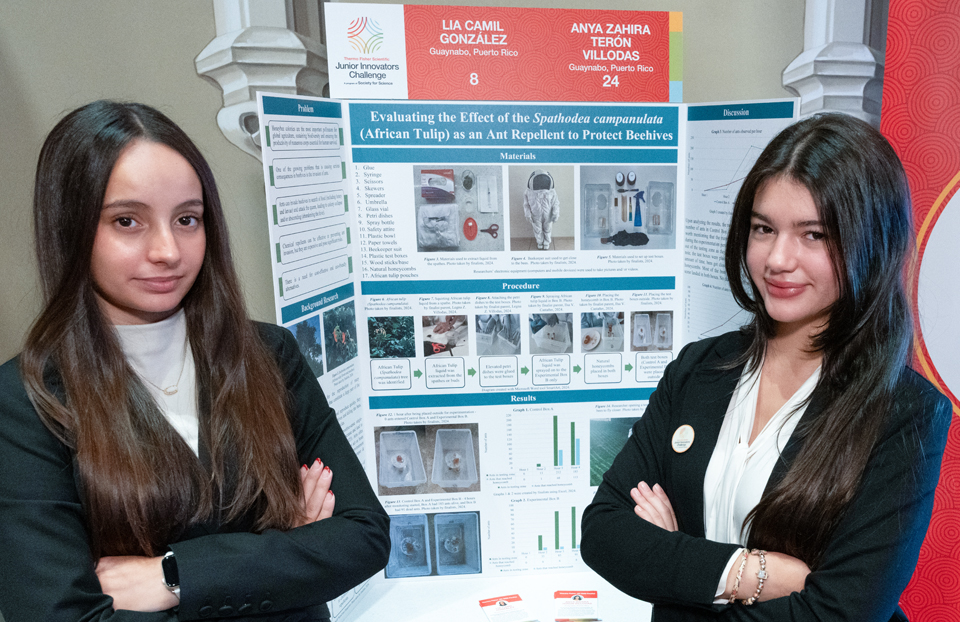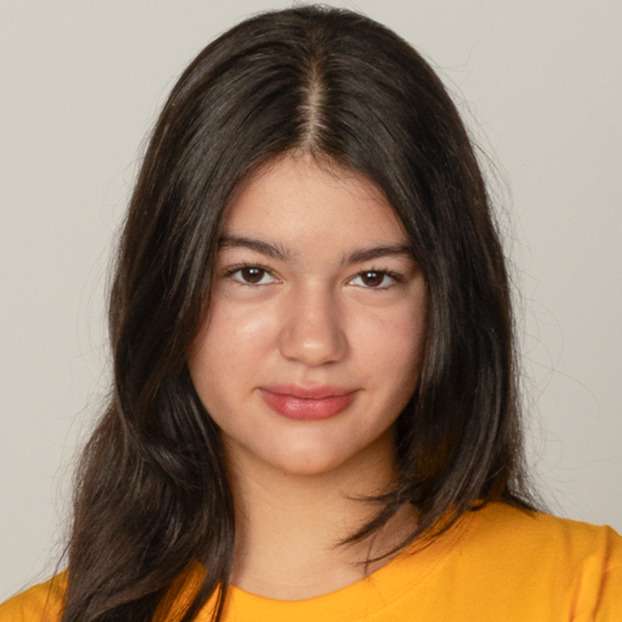Anya Zahira Terón Villodas
8th Grade, Colegio Rosa-Bell
Guaynabo, PR
Evaluating the Effect of Spathodea campanulata (African Tulip) as an Ant Repellent To Protect Beehives
View Poster
Project Background
When Anya’s sister did science fair, she worked on honeybees. Anya and her teammate Lia Camil González picked up her concerns about these important pollinators. Populations of honeybees are declining due to threats from disease, pests and environmental stress. “We realized how important honeybees are to our ecosystem, making this a problem we wanted to find a solution for,” Anya says. The team decided to find out how to repel the ants that can invade beehives, and came across the African Tulip tree, Spathodea campanulata.
Tactics and Results
The African Tulip tree is a large invasive tree in Puerto Rico. It forms hollow flower buds that fill with liquid. Anya and Lia Camil wanted to find out if the liquid could serve as an ant repellant. They built two model beehives. The team placed tempting honeycomb in the dummy hives to attract ants and sprayed one hive with African Tulip tree liquid. They checked the boxes every hour for four hours. After four hours, the control box had 183 ants, and 62 percent had reached the honeycomb. The African Tulip tree box had 91 dead ants. Meanwhile, the pair notices that bees flew into both boxes, attracted to the honeycomb, and appeared unaffected. The team concluded that the African Tulip tree liquid is capable of repelling and killing ants and hope to find out what compounds in the liquid make it effective.

Beyond the Project
Anya loves to play soccer. While it’s a demanding sport, it makes her feel free, “and a sip of water after soccer practice might be one of the best things ever,” she says. Anya has also done modeling. She hopes to be a chemist. Anya suffers from dermographism, where the skin forms large welts after being scratched, and keratosis pilaris, where her skin forms small round bumps. “These conditions have made me cautious of what ingredients my skincare products contain,” Anya says. She hopes to design products to help other people with the conditions.

